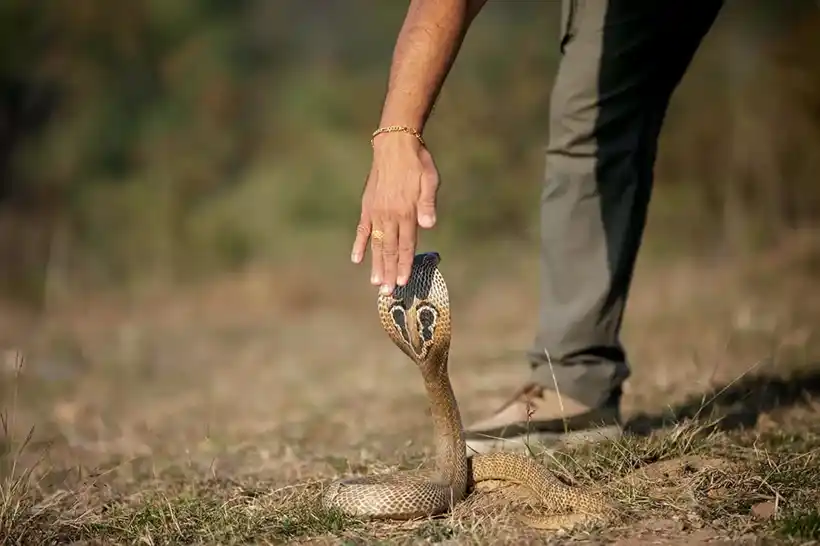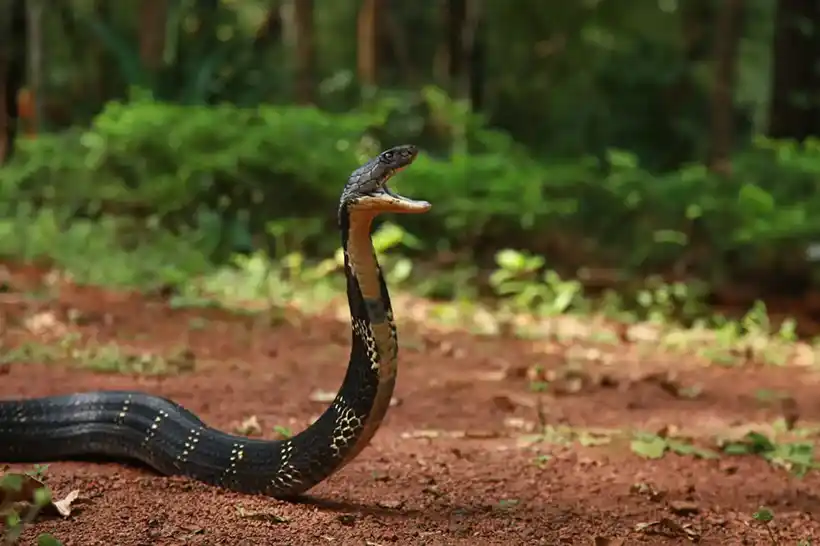
A man in India has survived 17 snakebites by a venomous snake. Suresh Kumar was working in his field in the state of Uttar Pradesh when the snake attacked. The snake bit his legs, arms, and torso. He immediately rushed to the hospital, where he was treated for the snakebites.
The incident has shocked the local community and raised awareness of the dangers of snakes. Suresh Kumar’s story is a miracle, but it is also a reminder that snakebites can be fatal. If you are ever bitten by a snake, it is important to seek medical attention immediately. Kumar received immediate medical attention. This is crucial for anyone who has been bitten by a venomous snake, as the sooner antivenom is administered, the better the chances of survival. Do not try to suck out the venom, apply a tourniquet, or cut the wound. These actions will not help and could actually make the situation worse.
The Dangers of Snakes and Snakebites

Kumar’s story is a miracle, but it is also a reminder of the dangers of snakes. There are over 3,000 species of snakes in the world, and about 600 of them are venomous. Each year, there are an estimated 63,000 deaths worldwide because of snakebites. According to the World Health Organization, India has the highest number of snakebite deaths in the world, with an estimated 50,000 deaths per year. This is due to a number of factors, including the large number of venomous snakes in India, the lack of access to antivenom, and the poor quality of healthcare in many parts of the country.
India is home to over 300 species of snakes, of which more than 60 are venomous. The venomous snakes in India belong to four families: Colubridae, Elapidae, Hydrophiidae, and Viperidae.
- The Colubridae family is the largest snake family in the world, and it includes both venomous and non-venomous snakes. Some of the venomous snakes in the Colubridae family include the king cobra, the coral snake, and the milk snake.
- The Elapidae family includes some of the most venomous snakes in the world, such as the cobra, the krait, and the mamba.
- The Hydrophiidae family includes sea snakes, which are all venomous.
- The Viperidae family includes vipers such as the Russell’s viper and the saw-scaled viper.
The four most venomous snakes in India are the spectacled cobra, the common krait, the Russell’s viper, and the saw-scaled viper. These snakes are responsible for the majority of snakebite deaths in India. A recent study has revealed that snakebites have claimed the lives of approximately 1.2 million people in India over the past two decades.
Snakebites: critical global health priority
The World Health Organization (WHO) has designated snakebites as a critical global health priority, emphasizing the severity of the issue. Neglected as one of the most overlooked tropical diseases, complications associated with snake attacks contribute to its significance.
The WHO reports that snake bites claim an estimated annual fatality count of 81,000 to 138,000 individuals globally. Shockingly, the vast number of survivors, who frequently suffer lifelong disabilities as a consequence of these incidents, triples this figure.
Stay alert, stay safe!

It is important to note that not all venomous snakes are aggressive. Many venomous snakes will only bite if they feel threatened. If you see a snake, it is best to admire it from a distance and leave it alone. Be aware of your surroundings. Snakes frequently inhabit areas abundant in food and water, such as forests, fields, and gardens. When venturing into snake-prone environments, it is advisable to wear boots and long pants.



